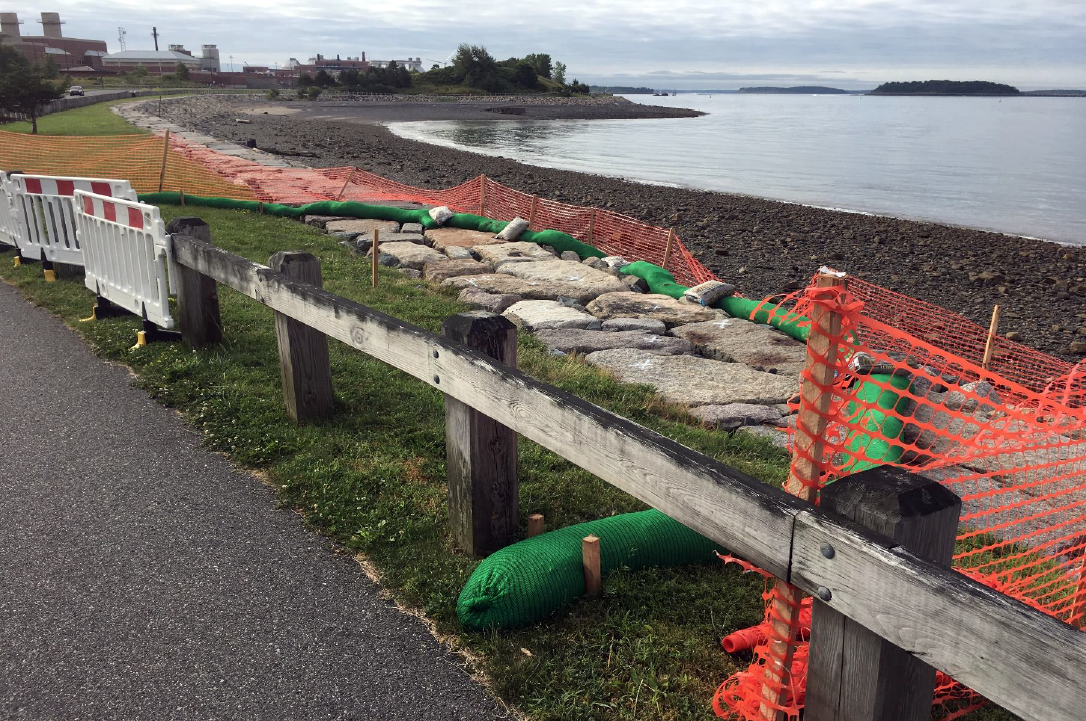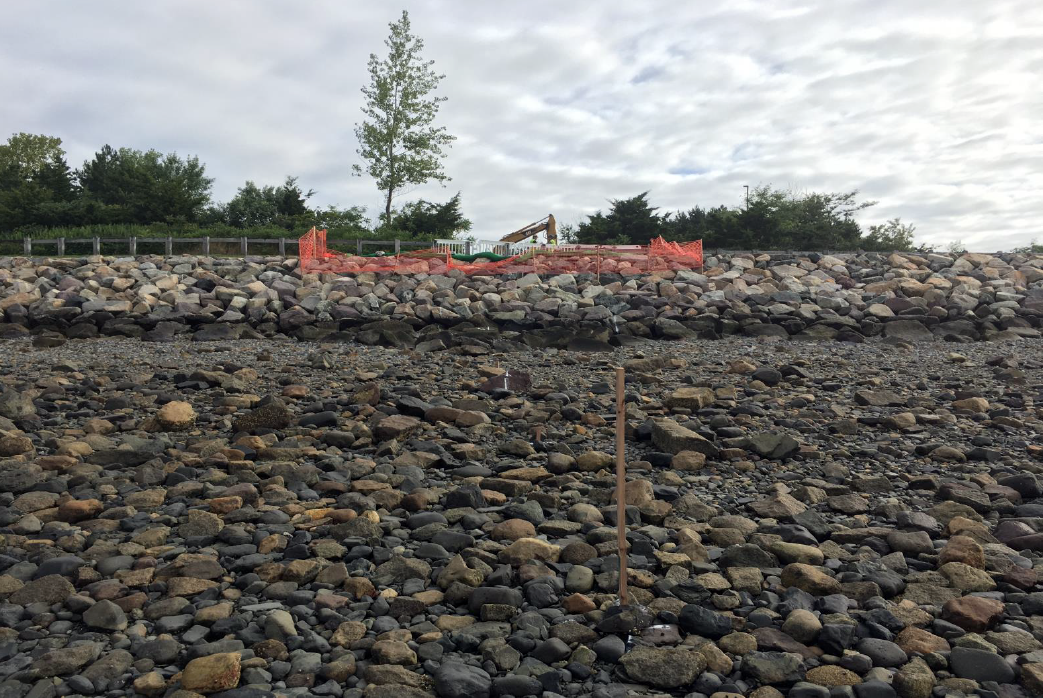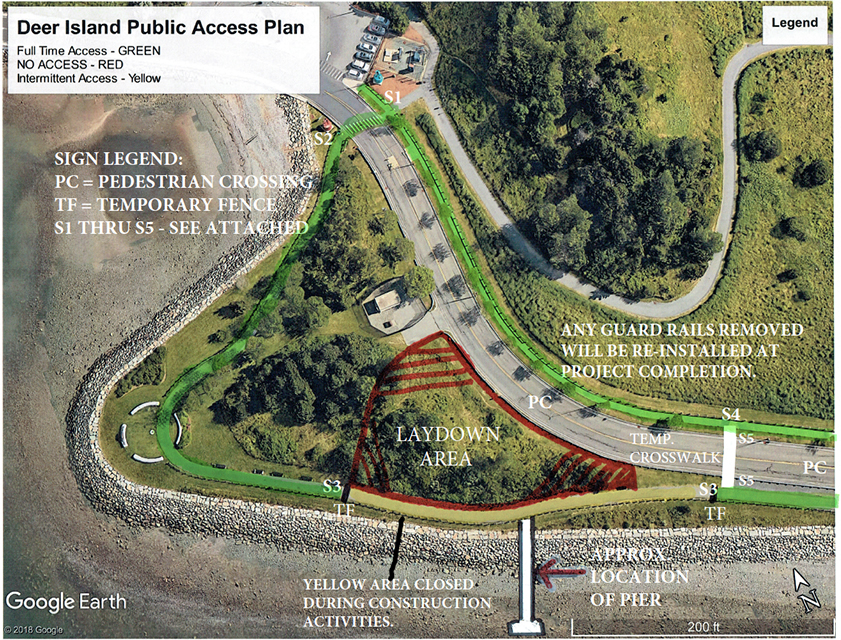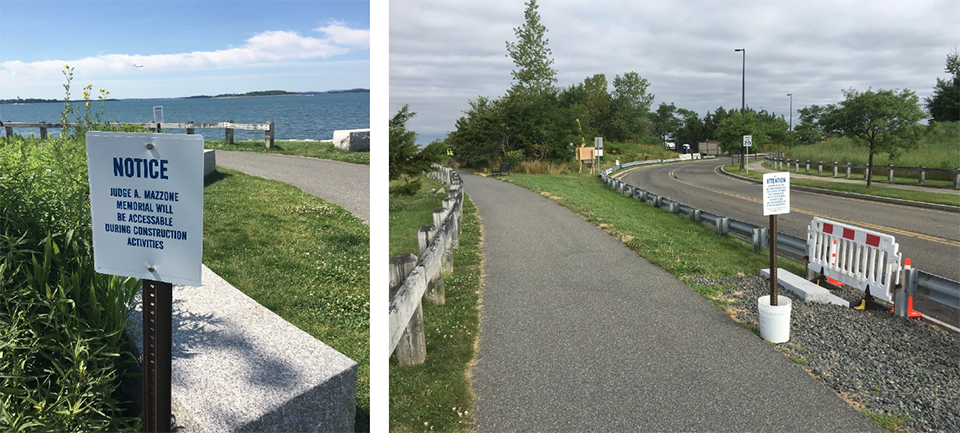Massachusetts Water Resources Authority
PROJECT UPDATE
Updated:
October 7, 2020
Contact:
Jeffrey McLaughlin
Jeffrey.McLaughlin@mwra.com, (617) 305-5762
Massachusetts Department of Fish and Game
Public Access Fishing Pier at Deer Island
Location for the Deer Island Fishing Pier. About this Project: As of July 2019, the construction of a Fishing Pier at Deer Island has begun and is expected to be completed and accessible to the public in 2020. With the support of the MWRA, the Department of Fish and Game is constructing the pier to promote and improve programs and opportunities for saltwater fishing with the intent that those programs will increase public access to marine recreational facilities. MWRA maintains a similar fishing pier as part of the public access area at the Nut Island Headworks in Quincy and has found it to be well used and appreciated by the community. The pier is being constructed on the northwestern section of the public access area of the island not far from the Mazzone Memorial, jutting out from the island in a southerly direction. Construction is in progress and the main access road will not be impacted, as there will always be at least one full traffic lane open at all times over the next several months. When access restrictions are in place, a police detail will assist in the traffic pattern. Signage has been posted to announce the project and any public access restrictions. Important Security Information
The view above is from Boston Harbor facing Deer Island’s shore. Public Access Plan and Parking During Construction: Pedestrians will be redirected along some public access pathways from one side of the road to the other around the fishing pier during construction. There is signage in place for guests to direct them during any detours. Public Access and Parking Once Completed: MWRA Contact: If you have any questions please email Jeffrey.McLaughlin or call (617) 305-5762. To receive electronic project updates, please register your email address with the MWRA Alerts Service, provided through Everbridge. UpdatesOctober 6, 2020 View of completed Fishing Pier View of completed Fishing Pier View of completed Fishing Pier Parking lot landscaping February 27, 2020 Work Update:
Upcoming Work:
 View of Fishing Pier near completion  Fishing pier walkway February 4, 2020 Photo updates for November and December 2019 work:  View of the Fishing Pier's ongoing installation of the stringers and pile caps. Stringers run across the length of the pier while pile caps run between only two support piles.  Views of the support piles and the temporary false work (brown I-beams). False work is used as a guide to install the support piles and staging for workers. Before completion of work, the false work will be removed.  Views of the stringers, blocking and pile capes. Next stage of construction is installation of the rail post, electrical for the lights and decking.  View of the pile cap, which will be used as a support for light posts.  Views of the workers installing adaptor plate for a pile cap. September 20, 2019 Construction update: All piles have been installed. The contractor (ACK Marine) is currently working on installing pile caps. Piles caps are large 16” Wide X 16” Tall X 10’ long sections of timber that are placed over two piles and attached to the piles through an adopter plate, see below for illustration.   View of the vibratory hammer installing a permanent pile (1 of 2)  View of the vibratory hammer finishing installing a permanent pile (1 of 2)  View of the permanent piles and false work (1 of 3)  View of the permanent piles and false work (2 of 3)  View of the permanent piles and false work (3 of 3)  View above is an adopter plate installed on the top of a pile. September 20, 2019 Construction update:
Construction photos:  View of the supply barge.  View of false work. False work is a temporary system to ensure  View of the concrete headwall (on the bottom of the picture) and workers  View of the vibratory hammer. The vibratory hammer is used to drive false  View of workers setting up a permanent pile to be driven into the sea floor.  View of the overall site. In the middle of the photo is the working badge. August 21, 2019 Construction update:
Construction photos:      |
Follow us |



